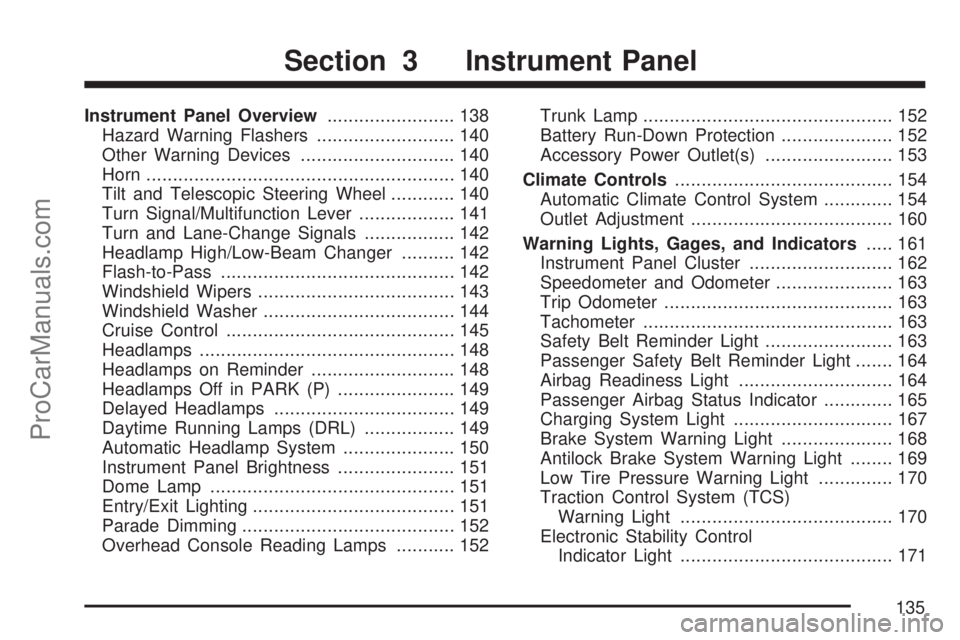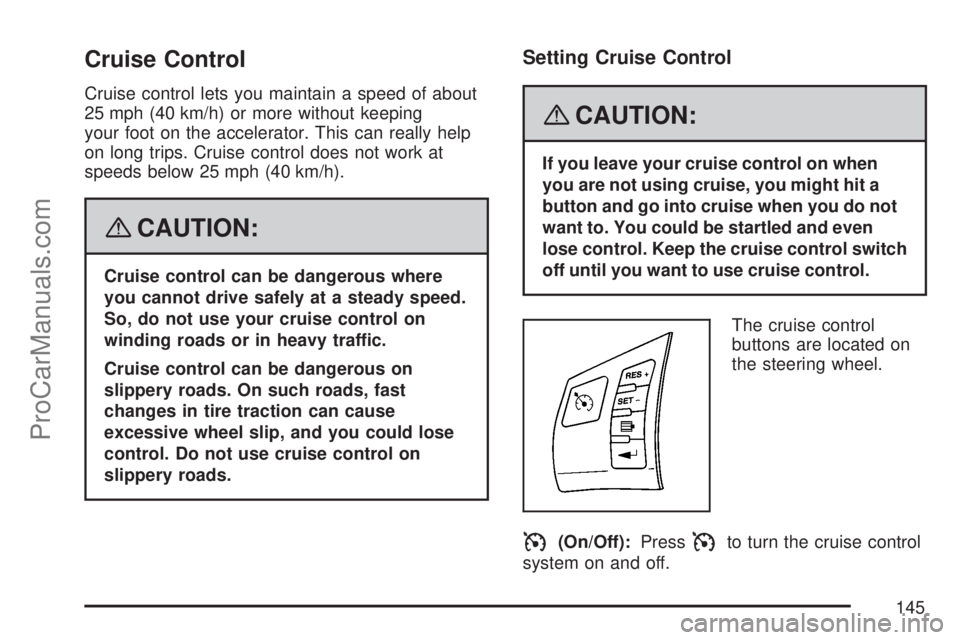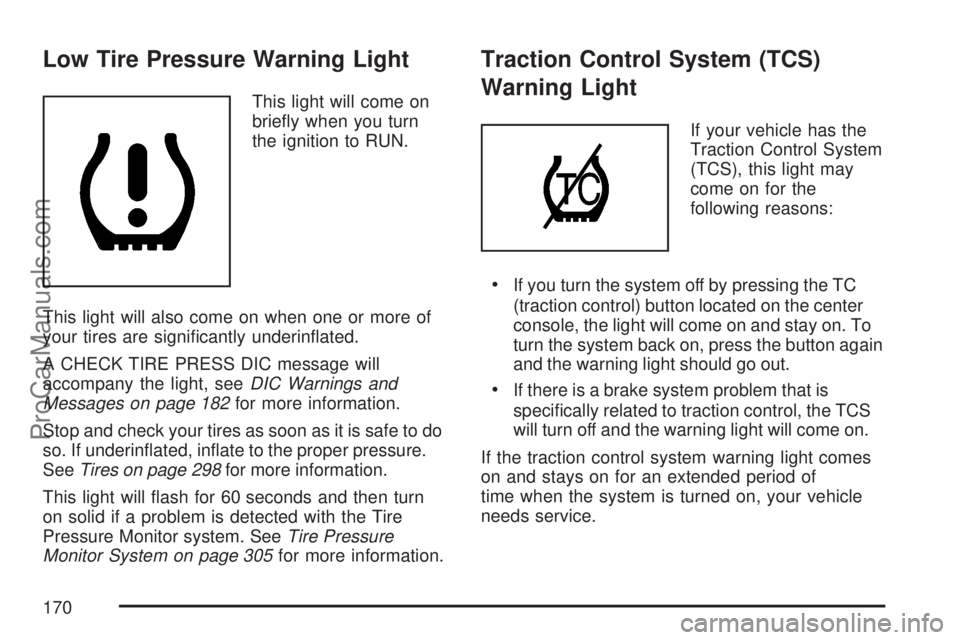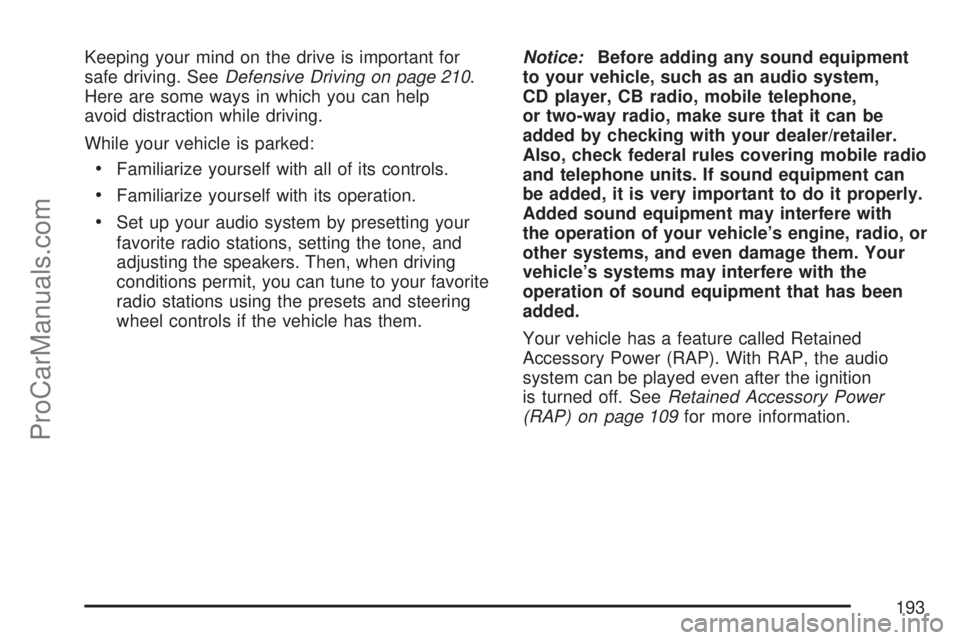traction control SATURN AURA 2007 Owners Manual
[x] Cancel search | Manufacturer: SATURN, Model Year: 2007, Model line: AURA, Model: SATURN AURA 2007Pages: 406, PDF Size: 6.49 MB
Page 135 of 406

Instrument Panel Overview........................ 138
Hazard Warning Flashers.......................... 140
Other Warning Devices............................. 140
Horn.......................................................... 140
Tilt and Telescopic Steering Wheel............ 140
Turn Signal/Multifunction Lever.................. 141
Turn and Lane-Change Signals................. 142
Headlamp High/Low-Beam Changer.......... 142
Flash-to-Pass............................................ 142
Windshield Wipers..................................... 143
Windshield Washer.................................... 144
Cruise Control........................................... 145
Headlamps................................................ 148
Headlamps on Reminder........................... 148
Headlamps Off in PARK (P)...................... 149
Delayed Headlamps.................................. 149
Daytime Running Lamps (DRL)................. 149
Automatic Headlamp System..................... 150
Instrument Panel Brightness...................... 151
Dome Lamp.............................................. 151
Entry/Exit Lighting...................................... 151
Parade Dimming........................................ 152
Overhead Console Reading Lamps........... 152Trunk Lamp............................................... 152
Battery Run-Down Protection..................... 152
Accessory Power Outlet(s)........................ 153
Climate Controls......................................... 154
Automatic Climate Control System............. 154
Outlet Adjustment...................................... 160
Warning Lights, Gages, and Indicators..... 161
Instrument Panel Cluster........................... 162
Speedometer and Odometer...................... 163
Trip Odometer........................................... 163
Tachometer............................................... 163
Safety Belt Reminder Light........................ 163
Passenger Safety Belt Reminder Light....... 164
Airbag Readiness Light............................. 164
Passenger Airbag Status Indicator............. 165
Charging System Light.............................. 167
Brake System Warning Light..................... 168
Antilock Brake System Warning Light........ 169
Low Tire Pressure Warning Light.............. 170
Traction Control System (TCS)
Warning Light........................................ 170
Electronic Stability Control
Indicator Light........................................ 171
Section 3 Instrument Panel
135
ProCarManuals.com
Page 139 of 406

The main components of your instrument panel are the following:
A. Air Outlets. SeeOutlet Adjustment on
page 160.
B. Turn Signal/Multifunction Lever. SeeTurn
Signal/Multifunction Lever on page 141.
C. Instrument Panel Cluster. SeeInstrument Panel
Cluster on page 162.
D. Windshield Wiper and Washer Lever. See
Windshield Wipers on page 143andWindshield
Washer on page 144.
E. Hazard Warning Flashers Button. SeeHazard
Warning Flashers on page 140.
F. Passenger Airbag Status Indicator. See
Passenger Airbag Status Indicator on page 165.
G. Instrument Panel Brightness Control. See
Instrument Panel Brightness on page 151.
H. Cruise Controls. SeeCruise Control on
page 145. Driver Information Center (DIC)
Buttons. SeeDriver Information Center (DIC)
on page 179.
I. Tilt Lever. SeeTilt and Telescopic Steering
Wheel on page 140.J. Horn. SeeHorn on page 140.
K. Audio Steering Wheel Controls (If Equipped).
SeeAudio Steering Wheel Controls on
page 206.
L. Ignition Switch. SeeIgnition Positions on
page 108.
M. Automatic Climate Control System. See
Automatic Climate Control System on
page 154.
N. Traction Control Button. SeeTraction Control
System (TCS) on page 217. Electronic Stability
Control Button. SeeElectronic Stability
Control on page 219.
O. Shift Lever. SeeAutomatic Transaxle Operation
on page 116.
P. Audio System. SeeAudio System(s) on
page 192.
Q. Glove Box. SeeGlove Box on page 131.
139
ProCarManuals.com
Page 145 of 406

Cruise Control
Cruise control lets you maintain a speed of about
25 mph (40 km/h) or more without keeping
your foot on the accelerator. This can really help
on long trips. Cruise control does not work at
speeds below 25 mph (40 km/h).
{CAUTION:
Cruise control can be dangerous where
you cannot drive safely at a steady speed.
So, do not use your cruise control on
winding roads or in heavy traffic.
Cruise control can be dangerous on
slippery roads. On such roads, fast
changes in tire traction can cause
excessive wheel slip, and you could lose
control. Do not use cruise control on
slippery roads.
Setting Cruise Control
{CAUTION:
If you leave your cruise control on when
you are not using cruise, you might hit a
button and go into cruise when you do not
want to. You could be startled and even
lose control. Keep the cruise control switch
off until you want to use cruise control.
The cruise control
buttons are located on
the steering wheel.
I(On/Off):PressIto turn the cruise control
system on and off.
145
ProCarManuals.com
Page 146 of 406

RES+ (Resume):Press RES+ to resume a set
speed and to accelerate the speed.
SET−(Set):Press SET– to set a speed and to
decrease the speed.
To set a speed do the following:
1. Press
Ito turn cruise control on. The
indicator light on the button comes on.
2. Get up to the desired speed.
3. Press the SET−and release it. The cruise
symbol displays in the instrument panel
cluster to show the system is engaged.
4. Take your foot off the accelerator pedal.
When the brakes are applied, the cruise control
shuts off.
If the vehicle is in cruise control and the Traction
Control System (TCS) begins to limit wheel
spin, the cruise control automatically disengages.
SeeTraction Control System (TCS) on page 217.
When road conditions allow, the cruise control
can be used again.
Resuming a Set Speed
Suppose you set the cruise control at a desired
speed and then apply the brakes. This disengages
the cruise control. The cruise symbol in the
instrument panel cluster also goes out indicating
cruise is no longer engaged. To return to the
previously set speed, you do not need to
go through the set process again. Once the
vehicle is at a speed of about 25 mph (40 km/h) or
more, you can brie�y press the RES+.
This takes the vehicle back up to the previously
chosen speed and stays there.
Increasing Speed While Using Cruise
Control
There are two ways to go to a higher speed.
If the cruise control system is already
engaged, press the RES+. Hold it there until
you reach the desired speed, and then release
the button.
To increase the vehicle’s speed in very small
amounts, brie�y press the RES+ and then
release it. Each time this is done, the vehicle
goes about 1 mph (1.6 km/h) faster.
146
ProCarManuals.com
Page 170 of 406

Low Tire Pressure Warning Light
This light will come on
brie�y when you turn
the ignition to RUN.
This light will also come on when one or more of
your tires are signi�cantly underin�ated.
A CHECK TIRE PRESS DIC message will
accompany the light, seeDIC Warnings and
Messages on page 182for more information.
Stop and check your tires as soon as it is safe to do
so. If underin�ated, in�ate to the proper pressure.
SeeTires on page 298for more information.
This light will �ash for 60 seconds and then turn
on solid if a problem is detected with the Tire
Pressure Monitor system. SeeTire Pressure
Monitor System on page 305for more information.
Traction Control System (TCS)
Warning Light
If your vehicle has the
Traction Control System
(TCS), this light may
come on for the
following reasons:
If you turn the system off by pressing the TC
(traction control) button located on the center
console, the light will come on and stay on. To
turn the system back on, press the button again
and the warning light should go out.
If there is a brake system problem that is
speci�cally related to traction control, the TCS
will turn off and the warning light will come on.
If the traction control system warning light comes
on and stays on for an extended period of
time when the system is turned on, your vehicle
needs service.
170
ProCarManuals.com
Page 185 of 406

HOOD AJAR
This message displays if the hood is not fully
closed. Make sure that the hood is closed
completely. The vehicle will not auto stop when
the hood is ajar.
ICE POSSIBLE
This message displays when the outside air
temperature is cold enough to create icy road
conditions. Adjust your driving accordingly.
KEY FOB BATT (Battery) LOW
This message displays if the Remote Keyless
Entry (RKE) transmitter battery is low. Replace the
battery in the transmitter. See “Battery
Replacement” underRemote Keyless Entry (RKE)
System Operation on page 90.
LOW FUEL
This message displays when your vehicle is low
on fuel. Re�ll the fuel tank as soon as possible.
SeeFuel Gage on page 177,Fuel on page 255,
andFilling the Tank on page 258for more
information.
LOW TRACTION
If your vehicle has the Traction Control System
(TCS), this message displays when the system is
actively limiting wheel spin. Slippery road
conditions may exist if this message is displayed,
so adjust your driving accordingly. This message
stays on for a few seconds after the system stops
limiting wheel spin. SeeTraction Control System
(TCS) on page 217for more information.
LOW WASHER FLUID
This message displays when the vehicle’s
windshield washer �uid is low. Fill the windshield
washer �uid reservoir to the proper level as
soon as possible. SeeWindshield Washer Fluid
on page 282.
POWER STEERING
This message displays if a problem has been
detected with the electric power steering. Have
your vehicle serviced by your retailer immediately.
PUSH PARK PEDAL
This message displays if the parking brake is left
engaged. SeeParking Brake on page 119for
more information.
185
ProCarManuals.com
Page 186 of 406

SERVICE AIR BAG
This message displays when there is a problem
with the airbag system. Have your vehicle serviced
by your retailer immediately.
SERVICE ESC (ELECTRONIC STABILITY
CONTROL)
If your vehicle has Electronic Stability Control
(ESC), this message displays and a chime sounds
if there has been a problem detected with ESC.
The ESC light also appears on the instrument
panel cluster. This light stays on solid as long as
the detected problem remains present. When
this message displays, the system is not working.
Adjust your driving accordingly. SeeElectronic
Stability Control on page 219andElectronic
Stability Control Indicator Light on page 171for
more information.
If this message turns on while you are driving, pull
off the road as soon as possible and stop
carefully. Try resetting the system by turning the
ignition off and then back on. If this message
still stays on or turns back on again while you are
driving, your vehicle needs service. Have the
ESC inspected by your retailer as soon as
possible.
SERVICE HYBRID
This message displays if the hybrid components
need to be serviced. Have your vehicle serviced by
your retailer.
SERVICE TRACTION
If your vehicle has the Traction Control System
(TCS), this message displays and a chime sounds
when the system is not functioning properly.
The TCS light also appears on the instrument
panel cluster. This light stays on solid as long as
the detected problem remains present. When
this message displays, the system is not working.
Adjust your driving accordingly. SeeTraction
Control System (TCS) on page 217andTraction
Control System (TCS) Warning Light on page 170
for more information. Have the system serviced
by your retailer as soon as possible.
SRVC (Service) HILL START
This message displays if there is a problem with
the hill start assist function. Have your vehicle
serviced by your retailer.
186
ProCarManuals.com
Page 187 of 406

TRACTION OFF
If your vehicle has the Traction Control System
(TCS), this message displays and the TCS light on
the instrument panel cluster comes on solid when
the system is turned off. Adjust your driving
accordingly. SeeTraction Control System (TCS) on
page 217andTraction Control System (TCS)
Warning Light on page 170for more information.
TRUNK AJAR
This message displays when the trunk is not
closed completely. Make sure that the trunk is
closed completely. SeeTrunk on page 97for more
information.
DIC Vehicle Personalization
Your vehicle has personalization capabilities that
allow you to program certain features to a
preferred setting. All of the features listed may not
be available on your vehicle. Only the features
available will be displayed on the DIC.
The default settings for the features were set
when your vehicle left the factory, but may have
been changed from their default state since
that time.To change feature settings, use the following
procedure:
Entering Personalization Menu
1. Turn the ignition on while the vehicle is
stopped.
To avoid excessive drain on the battery, it is
recommended that the headlamps are
turned off.
2. Press and hold the information and reset
buttons at the same time for one second, then
release to enter the personalization menu.
If the vehicle speed is greater than 2 mph
(3 km/h), only the UNITS menu will be
accessible.
3. Press the information button to scroll through
the available personalization menu modes.
Press the reset button to scroll through
the available settings for each mode.
If you do not make a selection within ten
seconds, the display will go back to the
previous information displayed.
187
ProCarManuals.com
Page 193 of 406

Keeping your mind on the drive is important for
safe driving. SeeDefensive Driving on page 210.
Here are some ways in which you can help
avoid distraction while driving.
While your vehicle is parked:
Familiarize yourself with all of its controls.
Familiarize yourself with its operation.
Set up your audio system by presetting your
favorite radio stations, setting the tone, and
adjusting the speakers. Then, when driving
conditions permit, you can tune to your favorite
radio stations using the presets and steering
wheel controls if the vehicle has them.Notice:Before adding any sound equipment
to your vehicle, such as an audio system,
CD player, CB radio, mobile telephone,
or two-way radio, make sure that it can be
added by checking with your dealer/retailer.
Also, check federal rules covering mobile radio
and telephone units. If sound equipment can
be added, it is very important to do it properly.
Added sound equipment may interfere with
the operation of your vehicle’s engine, radio, or
other systems, and even damage them. Your
vehicle’s systems may interfere with the
operation of sound equipment that has been
added.
Your vehicle has a feature called Retained
Accessory Power (RAP). With RAP, the audio
system can be played even after the ignition
is turned off. SeeRetained Accessory Power
(RAP) on page 109for more information.
193
ProCarManuals.com
Page 209 of 406

Your Driving, the Road, and
Your Vehicle............................................ 210
Defensive Driving...................................... 210
Drunken Driving........................................ 211
Control of a Vehicle.................................. 214
Braking...................................................... 214
Antilock Brake System (ABS).................... 215
Braking in Emergencies............................. 217
Traction Control System (TCS).................. 217
Electronic Stability Control......................... 219
Steering.................................................... 221
Off-Road Recovery.................................... 224
Passing..................................................... 224
Loss of Control.......................................... 226
Driving at Night......................................... 227Driving in Rain and on Wet Roads............ 228
City Driving............................................... 231
Freeway Driving........................................ 232
Before Leaving on a Long Trip.................. 233
Highway Hypnosis..................................... 234
Hill and Mountain Roads........................... 235
Winter Driving........................................... 237
If Your Vehicle is Stuck in Sand, Mud,
Ice, or Snow.......................................... 241
Rocking Your Vehicle to Get It Out........... 242
Loading Your Vehicle................................ 242
Towing........................................................ 247
Towing Your Vehicle................................. 247
Recreational Vehicle Towing...................... 247
Towing a Trailer........................................ 250
Section 4 Driving Your Vehicle
209
ProCarManuals.com